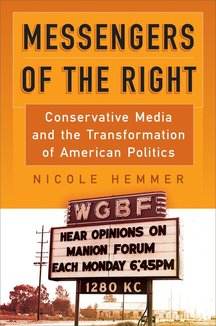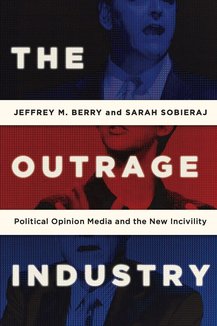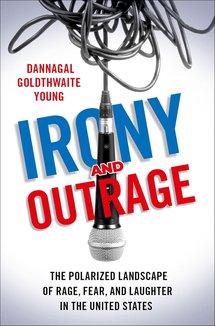Recommended Books

Messengers of the Right: Conservative Media and the Transformation of American Politics (Politics and Culture in Modern America)
Author:
Nicole Hemmer
ISBN 13:
978-0812224306
From Rush Limbaugh and Sean Hannity to Glenn Beck and Matt Drudge, Americans are accustomed to thinking of right-wing media as integral to contemporary conservatism. But today's well-known personalities make up the second generation of broadcasting and publishing activists. Messengers of the Right tells the story of the little-known first generation. Beginning in the late 1940s, activists working in media emerged as leaders of the American conservative movement. They not only started an array of enterprises—publishing houses, radio programs, magazines, book clubs, television shows—they also built the movement. They coordinated rallies, founded organizations, ran political campaigns, and mobilized voters. While these media activists disagreed profoundly on tactics and strategy, they shared a belief that political change stemmed not just from ideas but from spreading those ideas through openly ideological communications channels. In Messengers of the Right , Nicole Hemmer explains how conservative media became the institutional and organizational nexus of the conservative movement, transforming audiences into activists and activists into a reliable voting base. Hemmer also explores how the idea of liberal media bias emerged, why conservatives have been more successful at media activism than liberals, and how the right remade both the Republican Party and American news media. Messengers of the Right follows broadcaster Clarence Manion, book publisher Henry Regnery, and magazine publisher William Rusher as they evolved from frustrated outsiders in search of a platform into leaders of one of the most significant and successful political movements of the twentieth century.
Find on:
 Amazon
Amazon

Constructing the Political Spectacle
Author:
Murray Edelman
ISBN 13:
978-0226183992
Thanks to the ready availability of political news today, informed citizens can protect and promote their own interests and the public interest more effectively. Or can they? Murray Edelman argues against this conventional interpretation of politics, one that takes for granted that we live in a world of facts and that people react rationally to the facts they know. In doing so, he explores in detail the ways in which the conspicuous aspects of the political scene are interpretations that systematically buttress established inequalities and interpretations already dominant political ideologies.

The Outrage Industry: Political Opinion Media and the New Incivility (Studies in Postwar American Political Development)
Authors:
Jeffrey M. Berry
,
Sarah Sobieraj
ISBN 13:
978-0190498467
In early 2012, conservative radio host Rush Limbaugh claimed that Sandra Fluke, a Georgetown University law student who advocated for insurance coverage of contraceptives, "wants to be paid to have sex." Over the next few days, Limbaugh attacked Fluke personally, often in crude terms, while a powerful backlash grew, led by organizations such as the National Organization for Women. But perhaps what was most notable about the incident was that it wasn't unusual. From Limbaugh's venomous attacks on Fluke to liberal radio host Mike Malloy's suggestion that Bill O'Reilly "drink a vat of poison... and choke to death," over-the-top discourse in today's political opinion media is pervasive. Anyone who observes the skyrocketing number of incendiary political opinion shows on television and radio might conclude that political vitriol on the airwaves is fueled by the increasingly partisan American political system. But in The Outrage Industry Jeffrey M. Berry and Sarah Sobieraj show how the proliferation of outrage-the provocative, hyperbolic style of commentary delivered by hosts like Ed Schultz, Bill O'Reilly, and Sean Hannity- says more about regulatory, technological, and cultural changes, than it does about our political inclinations. Berry and Sobieraj tackle the mechanics of outrage rhetoric, exploring its various forms such as mockery, emotional display, fear mongering, audience flattery, and conspiracy theories. They then investigate the impact of outrage rhetoric-which stigmatizes cooperation and brands collaboration and compromise as weak-on a contemporary political landscape that features frequent straight-party voting in Congress. Outrage tactics have also facilitated the growth of the Tea Party, a movement which appeals to older, white conservatives and has dragged the GOP farther away from the demographically significant moderates whose favor it should be courting. Finally, The Outrage Industry examines how these shows sour our own political lives, exacerbating anxieties about political talk and collaboration in our own communities. Drawing from a rich base of evidence, this book forces all of us to consider the negative consequences that flow from our increasingly hyper-partisan political media.
Find on:
 Amazon
Amazon

Irony and Outrage: The Polarized Landscape of Rage, Fear, and Laughter in the United States
Author:
Dannagal Goldthwaite Young
ISBN 13:
978-0190913083
For almost a decade, journalists and pundits have been asking why we don't see successful examples of political satire from conservatives or of opinion talk radio from liberals. This book turns that question on its head to argue that opinion talk is the political satire of the right and political satire is the opinion programming of the left. They look and feel like two different animals because their audiences are literally, two different animals. In Irony and Outrage , political and media psychologist Dannagal Goldthwaite Young explores the aesthetics, underlying logics, and histories of these two seemingly distinct genres, making the case that they should be thought of as the logical extensions of the psychology of the left and right, respectively. One genre is guided by ambiguity, play, deliberation, and openness, while the other is guided by certainty, vigilance, instinct, and boundaries. While the audiences for Sean Hannity and John Oliver come from opposing political ideologies, both are high in political interest, knowledge, and engagement, and both lack faith in many of our core democratic institutions. Young argues that the roles that these two genres play for their viewers are strikingly similar: galvanizing the opinion of the left or the right, mobilizing citizens around certain causes, and expressing a frustration with traditional news coverage while offering alternative sources of information and meaning. One key way in which they differ, however, concludes Young, is in their capacity to be exploited by special interests and political elites. Drawing on decades of research on political and media psychology and media effects, as well as historical accounts and interviews with comedians and comedy writers, Young unpacks satire's liberal "bias" and juxtaposes it with that of outrage's conservative "bias." She details how traits like tolerance for ambiguity and the motivation to engage with complex ideas shape our preferences for art, music, and literature; and how those same traits correlate with political ideology. In turn, she illustrates how these traits help explain why liberals and conservatives vary in the genres of political information they prefer to create and consume.
Find on:
 Amazon
Amazon